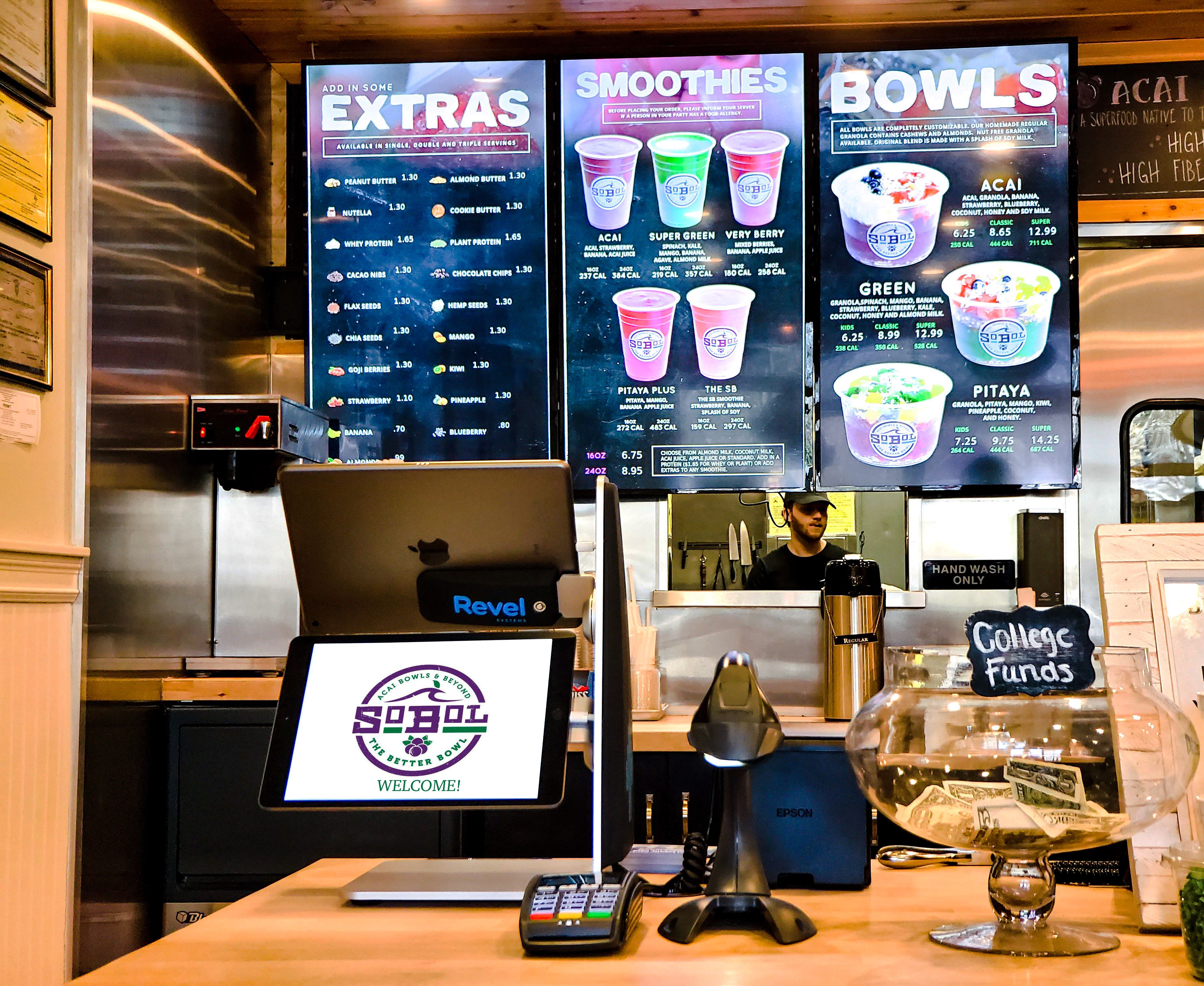Call Sales: +1 (833) 437-3835
Call Sales: +1 (833) 437-3835
Coral Drake | March 17, 2014 |

You’ve finally decided to check out that new little sandwich place down the street for a quick lunch. You walk in and start perusing the hand-written felt pen menu board and almost immediately you’ve got a few questions.
The food looks great but you can’t tell if the BLT is $4.99 or $9.99; and what exactly is a “Turley Sandal?” Could they mean “Turkey Sandwich?” It looks like the menu board was written very quickly, and there are smudges and wipe marks making it difficult to make a good lunch choice.
The hand written signs on the counter pitching the specials aren’t much help, either. Is that chicken soup, or chick pea soup? You may not have given much thought to menu board design, but it can make a huge difference in whether you make a sale or not.
If you own a restaurant, sandwich shop, or other menu-driven business, you already have plenty of work to do. Hand writing menus and daily special placards is just one more task in your increasingly busy workday. Writing a restaurant menu board by hand is time consuming and doesn’t offer the best results.
Why not let technology save you time and money with a digital menu board? A study of more than 310 quick-service restaurant locations conducted in 2021 found that, on average, digital menu boards completed orders 9.2 percent faster. There are many advantages of incorporating a digital menu display board into your current business model. Target specific demographics and easily change items and prices based on time of day or special promotional periods.
A digital menu board solves the problems of handwritten signage and assures you of always presenting up to date pricing like differences from your lunch to dinner menus. And, if you’re out of the special, you can remove it from the board so you’ll never have to say, “Sorry, we’re fresh out of that.”
It’s not just pricing information that makes a digital menu for restaurants a necessity. You can also display pictures of food items or messages targeted specifically to your customers with the incredible slideshow capability, making mouths water and increasing sales. Find a digital menu board that syncs flawlessly with your POS platform, meaning changes will immediately go into effect.
If you’re on the hunt for digital menu boards for restaurants, look for digital signage software that fully integrates the entire order process. You’ll have full control and oversight of everything from the pricing on the menu to kitchen displays for food prep. You can even incorporate an order ready board to let your customers know when their order is ready further streamlining the service process.
Leverage a digital message board to improve productivity, reduce pricing and ordering errors and help your staff operate at more efficient and productive levels. Who knows, you may even have time to enjoy one of your own delicious “Turley Sandals” in your new-found spare time.
Frequently Asked Questions
A good digital menu is one that is clear, up-to-date, and aesthetically pleasing. It should be easy to change items and prices based on factors like time of day or promotional periods. It should also have the ability to display enticing pictures of food or messages targeted to customers.
Digital menus are electronic boards displaying a restaurant's menu items, prices, and other relevant information. They can be operated through a cloud tech platform, allowing for real-time updates across all locations. Digital menus can be integrated with POS systems and offer features such as slideshow capabilities to vividly showcase food items.
You may want to create a custom online menu (or e-menu) for online orders. This allows you to control exactly which products are available online and when they're available without altering your main menu. You can also create different menus for different times (a late night menu, for instance), days of the week, limited-time special products, or seasons. Check out this article for tips on e-menu creation for Revel Systems.
Pricing can vary for digital menus depending on the specific factors at play for your restaurant(s). You’ll want to connect directly with vendor sales representatives for information on pricing and system requirements.
The best size for your digital menu depends on how far away your customers will be located from it then they order. Screen sizes can also vary widely, so this is another great question to raise during a direct conversation with a vendor so you can select the best size to accommodate your range of restaurant configurations.
Essential factors when designing a menu include clarity of information (avoiding issues like unclear pricing), aesthetic appeal (including the ability to display pictures of food items), and ease of updating to ensure the most current information is always displayed.